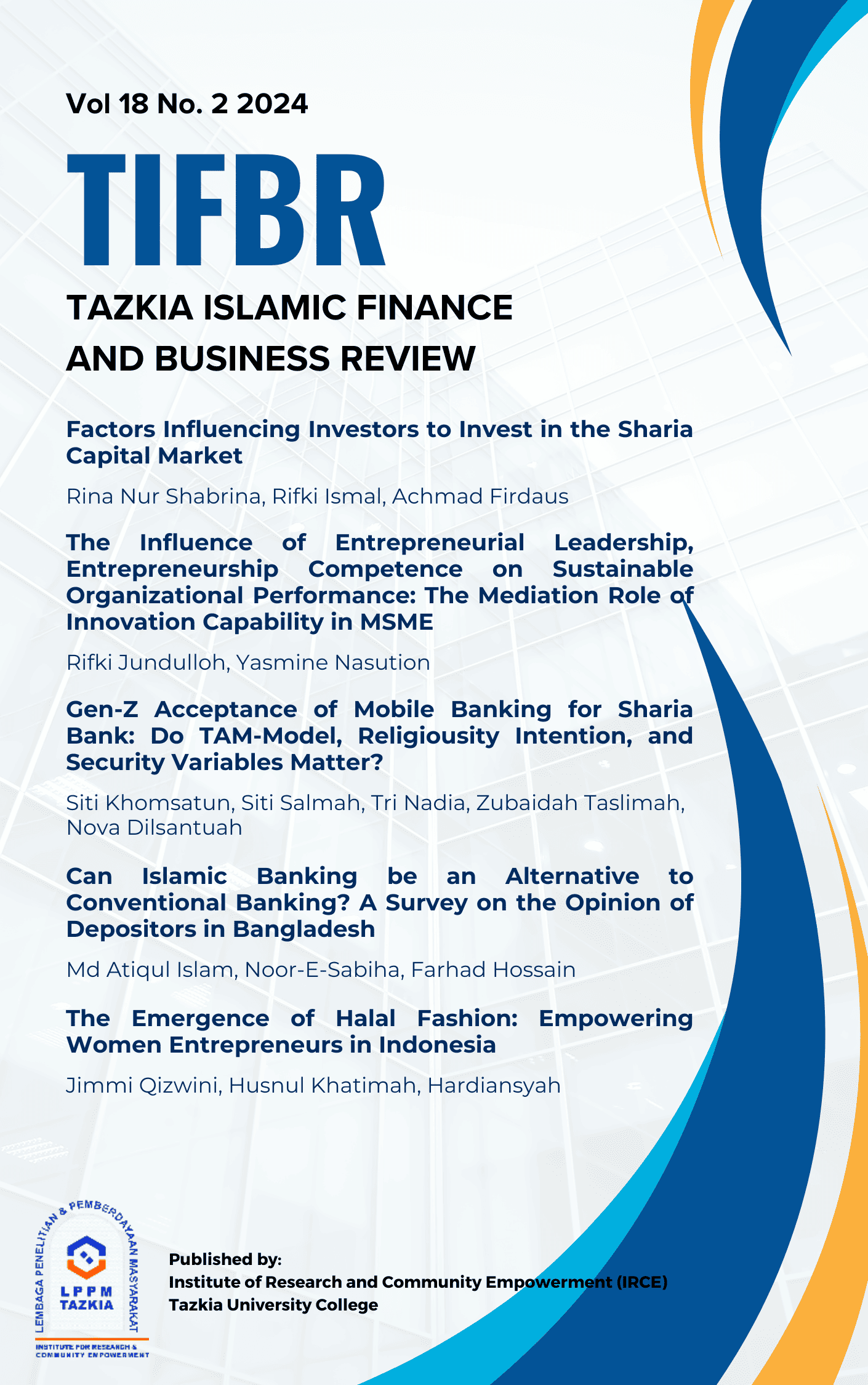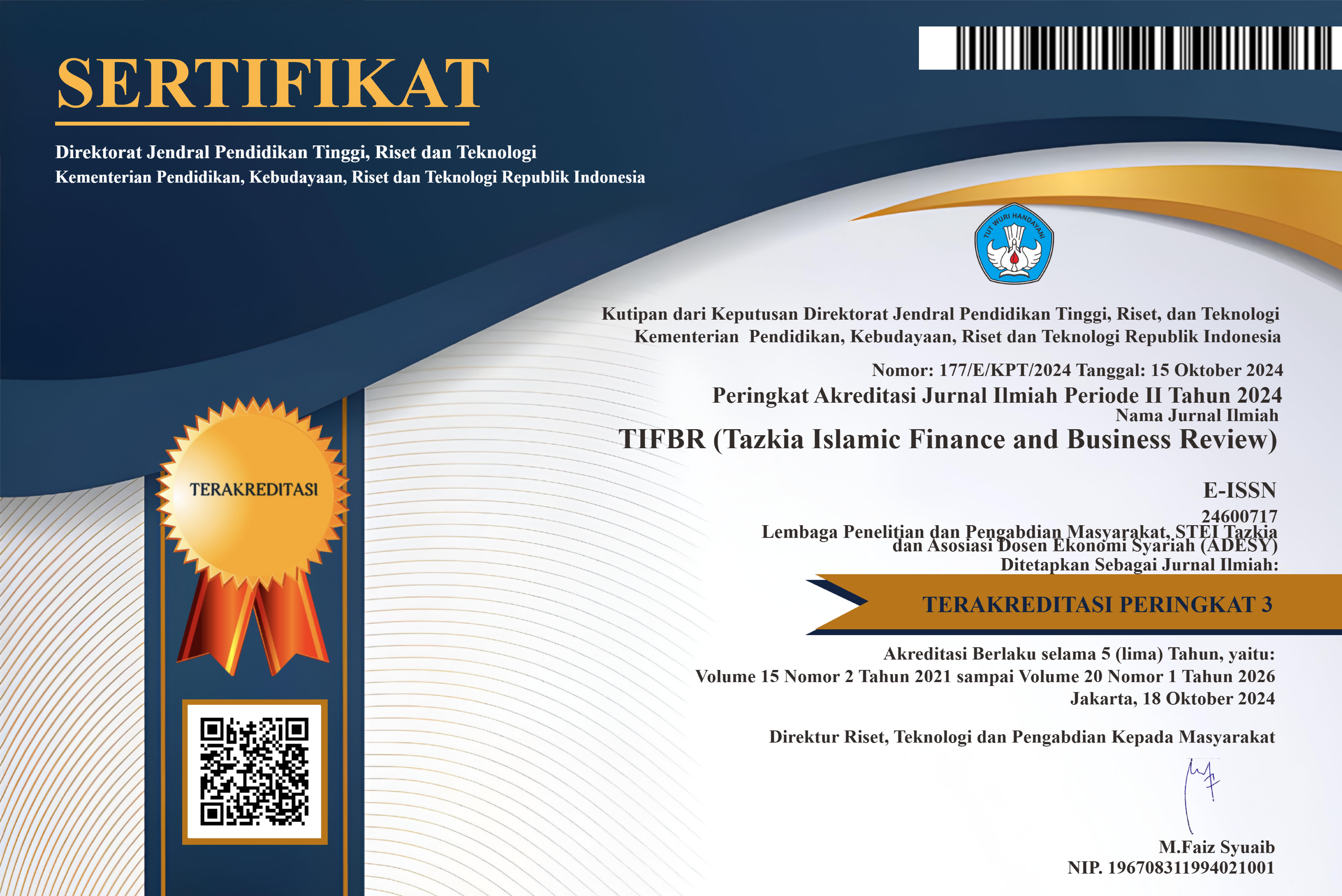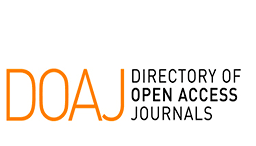Gen-Z Acceptance of Mobile Banking for Sharia Bank: Do TAM-Model, Religiousity Intention, and Security Variables Matter?
DOI:
https://doi.org/10.30993/tifbr.v18i2.359Abstract
This research aims to obtain empirical evidence regarding the acceptance and use of mobile banking at Bank Syariah Indonesia (BSI) by Generation Z, as well as proving what factors encourage Generation Z customers to adopt mobile banking in BSI. This research collected data from 100 BSI customers by Generation Z in Bogor, Indonesia. The research adopts Structural Equation Model-Partial Least Square (SEM-PLS) to link perceived usefulness, perceived ease of use, religiosity, satisfaction, security, intention to use and adoption of mobile banking. The results of this research reveal that the integration of the Technology Acceptance Model (TAM), Religious Intention Model and security variables in the Technology Based Factor (TBF) provides a more comprehensive explanation regarding the adoption of mobile banking by Generation Z customers of BSI. In addition to perceived usefulness and perceived ease of use, the results of this study emphasize the importance of security in mobile banking adoption. This research provides implications for BSI managers to improve their adoption of mobile banking services. Bank management needs to place special emphasis on security aspects in the development and promotion of Mobile Banking, as well as identify and implement effective security measures to protect customer data and transactions. This research is the first attempt to integrate the TAM model, Religious Intention Model and security variables in TBF to assess BSI mobile banking adoption.
Downloads
Published
How to Cite
Issue
Section
License
Copyright (c) 2024 Author and Publisher

This work is licensed under a Creative Commons Attribution-NonCommercial-ShareAlike 4.0 International License.

Tazkia Islamic Finance and Business Review (TIFBR) is licensed under a Creative Commons Attribution-NonCommercial 4.0 International License.
Authors who publish with this journal agree to the following terms:
- Authors retain copyright and grant the journal right of first publication with the work simultaneously licensed under a Creative Commons Attribution License that allows others to share the work with an acknowledgment of the work's authorship and initial publication in this journal.
- Authors are able to enter into separate, additional contractual arrangements for the non-exclusive distribution of the journal's published version of the work (e.g., post it to an institutional repository or publish it in a book), with an acknowledgment of its initial publication in this journal.
- Authors are permitted and encouraged to post their work online (e.g., in institutional repositories or on their website), as it can lead to productive exchanges, as well as earlier and greater citation of published work (See the Effect of Open Access).

















